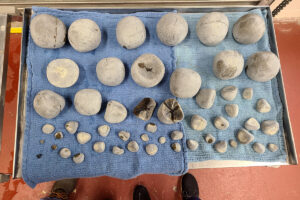Navicular Disease: Genetic or Acquired?
Navicular disease can derail a performance horse’s career. Arthritis-like changes in the navicular bone, including cysts, channels, chip fragments, and bony spurs, become visible on radiographs, but there is controversy about the connection
- Topics: Article, Navicular Problems
Navicular disease can derail a performance horse’s career. Arthritis-like changes in the navicular bone, including cysts, channels, chip fragments, and bony spurs, become visible on radiographs, but there is controversy about the connection between such changes and clinical lameness. Does intense work physically alter the shape of the navicular bone over time? Or is shape determined genetically, leading to lameness regardless of a horse’s level of performance? A group of researchers in the Netherlands recently set out to determine how shape and condition of the navicular bone relate to clinical signs of navicular disease.
The investigators discovered that navicular bone shape is largely determined at birth, and it is not the result of the horse’s workload. They also discovered that horses with abnormalities in the navicular bone (cysts, channels, spurs, etc.) were more likely to be lame. In fact, 85% of lame horses had abnormalities, compared to only 15% of sound horses. This finding refutes the notion that navicular disease can’t be predicted with radiographs. Predisposition to navicular disease appears to be determined at birth, but it is still not clear what factors contribute to deterioration of the bone over time.
Equine Veterinary Journal, 33(2), 172-175, 2001
Create a free account with TheHorse.com to view this content.
TheHorse.com is home to thousands of free articles about horse health care. In order to access some of our exclusive free content, you must be signed into TheHorse.com.
Start your free account today!
Already have an account?
and continue reading.
Related Articles
Stay on top of the most recent Horse Health news with

















